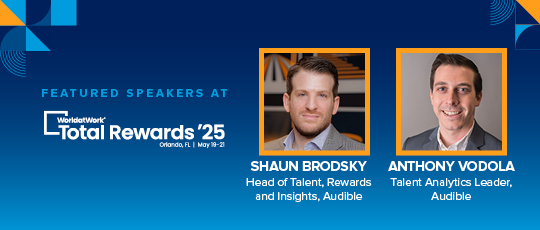- A safe environment for innovation. Employees must be confident they will not be punished for instigating change, and workers must be able to conceptualize change and then be willing to take the risk to advance those ideas.
- In a perfect position. HR is uniquely situated to encourage and support a pervasive culture of innovation, and almost every major element for which HR is responsible represents an opportunity to stimulate innovation.
- Fostering creativity. Work structures must facilitate innovation. Broad-based job structures, work that allows interaction with diverse employees and involvement in multi-disciplinary teams can all contribute to innovation.
- The importance of purpose. For employees to be able to generate ideas that add value, they must fundamentally understand the business and how the business creates value for the customer.
The pandemic unleashed extraordinary amounts of innovation. Organizations dealt with major disruptions in the supply chain, markets, labor forces and the very nature of work. Employees at all levels knew they were fighting to save the company and their jobs.
The pandemic also accelerated technologies for working remotely, home delivery of products and home entertainment. Without a doubt, the confluence of talent, effort and advancements in knowledge miraculously created multiple vaccines for COVID-19 and, within less than a year, more than 5 billion doses have been delivered. Business also adapted quickly, developing new products and services, along with innovative delivery methods.
Business leaders have long recognized that innovation is the key ingredient for maintaining a competitive position and expanding into new markets. As we enter a post-pandemic world, the question now becomes, “Can business maintain these increased levels of innovation and use them as opportunities for growth, as new markets emerge and competition increases?”
Couple that with shortages of key workers whose talents are in great demand and the dearth of low-wage employees directly serving the public, and it is evident that the importance of innovation has increased dramatically.
Deconstructing Innovation
Before examining specific HR strategies, policies and practices for encouraging innovation, let’s clarify what innovation involves and what is required for it to flourish. There are two major categories of innovation: product (or service innovation) and process innovation. Product and service innovation focus on developing new products or services for customers, as their needs and desires change.
In fact, innovation can help shape these needs and desires by offering new and better products or services. Process innovation, on the other hand, creates cheaper and better-quality products and services. Both forms of innovation drive company success, and, while related, require different strategies, policies and practices to achieve success.
Both product and process innovation come from employees. First, these employees must be confident they will not be punished for instigating change. This is critical. Next, these employees must be able to conceptualize change and then be willing to take the risk to advance those ideas. Innovative employees must possess the knowledge to develop original ideas, be motivated to invest additional effort (usually beyond what is required by their job) to bring those ideas to fruition and have the ability to articulate those ideas so that others will support their efforts.
The Role of HR in Building Sustainable Innovation
Innovation originates from, and is driven by, employees. This means that HR is uniquely positioned to encourage and support a pervasive culture of innovation. In fact, almost every major element for which HR is responsible represents an opportunity to stimulate innovation.
Take talent acquisition, for example. Collaborating with management, HR can identify the attributes possessed by innovative employees in your organization, such as broad-based education and experience, curiosity and desire to learn and the willingness to take risk and learn quickly from failure.
Building these skill sets in a workforce that is diverse in terms of gender, age, education and experience, race, and national origin provides multiple perspectives and insights needed with increasingly diverse markets and populations.
First, these desired attributes must be converted into specific criteria for recruitment and selection. Next, the company must use these criteria to attract and hire talent. Finally, employees with these attributes must be placed in positions where their talents will be nurtured and utilized. An organization’s demonstrated ability to encourage and utilize employee ideas represents a major element in recruiting such talent. This brings us to another way that HR can encourage innovation: structuring work.
To successfully utilize employee creativity, the work structure must facilitate innovation. Broad-based job structures, work that allows interaction with diverse employees, and involvement in multi-disciplinary teams can all contribute to innovation.
Each employee brings different life experiences and perspectives to the job situation. Provisions must be made, however, to allow time for employee interaction with others, experimentation and implementation of new processes or procedures. This includes leadership, which must also be tasked with accountability for achieving increased levels of innovation.
There are numerous programs for generating ideas to create new products and services or reduce cost and improve quality. Suggestion boxes, focus groups and task forces are just a few possibilities, but innovation is much more than people having great ideas. Innovation is a process of refining those ideas, investing (funding improvements) in those ideas, and implementing those ideas. All of this must happen before the organization receives value from the creation of new products or services and a return in lower cost and better quality.
Methodologies for developing and implementing innovation are not new. Many organizations have research and development (R&D) departments, where researchers originate new products and services and develop methods for improving quality or reducing costs.
Another methodology for eliciting, refining, and implementing innovative ideas is the Scanlon Plan (a form of gainsharing). Although this program is often thought of as an incentive for productivity improvement, it is designed to encourage and facilitate innovation among employees at all levels in the organization.
The Scanlon Plan incorporates the identification of process improvement, the refinement of those ideas, the evaluation of the feasibility and savings or improvements associated with those ideas, funding of improvements, implementation, evaluation of results, and rewarding employees for reducing costs or improving quality.
The Scanlon Plan has demonstrated the ability to improve quality and reduce costs since its inception in the late 1930s. The Scanlon Plan emphasizes employee understanding of business strategy and how the company earns profits (transparency). Probably most important is the rigorous documented process of encouraging, improving, and implementing process improvement innovation.
Creativity training is often suggested as one method for enhancing innovation. However, generating good ideas that can result in increased value for the organization requires much more than simply showing employees how to be creative.
For employees to be able to generate ideas that add value, they must fundamentally understand the business and how the business creates value for the customer. They must first consider the key attributes of the products and services valued by the customer and then determine how to incorporate those attributes into production so the company can profit from sales of those products and services.
Except at senior levels of management, one cannot assume that employees understand the fundamentals of business since many have never taken business classes or read business magazines. Given workforce turnover and the change in markets and technologies, employee development must be a continuous priority and investment, not minimal and sporadic, as is the case in most organizations.
Furthermore, leaders must learn how to encourage innovation from employees and how to nurture good ideas. Again, this is not a skill one can assume supervisors and managers possess. In fact, employees are often promoted into leadership roles because they are very good at managing the existing business, not improving upon the current model.
The Role of Rewards
People do what they find rewarding. That’s a simple fact. Employees appreciate the opportunity to share their ideas and collaborate with others, at least initially. The motivation associated with this opportunity to participate depends, in large part, on whether their suggestions are appreciated (recognized), implemented and do not result in additional work for them.
Over time, however, involvement in innovation requires extra effort beyond what is required for their jobs. And if the company is making money from these ideas, employees will feel unfairly treated. One needs to consider how or if an employee benefits from advocating for a better product or service or a better way to produce that product or service.
Numerous ways have been created for rewarding employees both financially and through recognition for innovation. These rewards include gainsharing and Scanlon Plans for productivity improvement, suggestion bonuses, profit sharing and stock awards, and rewards for publishing patents. Process improvement is much easier to reward than the development of new products or services for several reasons.
First, process improvement happens more frequently, and it is often easier to determine its added value to the company. For new products, it is difficult to foresee what the value will be, if the marketplace will purchase the product, or if you will beat a competitor to the market with the new product.
Another tool for encouraging innovation is the organization’s performance management system, which communicates values and provides criteria for measuring accomplishments. Performance planning is a place where leaders can establish the expectation that innovation is an inherent part of the job and develop innovation goals appropriate to the employee’s position in the organization.
Performance management can provide performance targets and metrics for rewarding teams and individual employees for their contributions to innovation. Performance management can also enhance innovation by rolling those metrics up through each level of the organization. This provides a management tool for monitoring innovation and a better understanding of how innovation can be encouraged throughout the company.
There are numerous places in an organization where innovative practices can be introduced. Again, the Scanlon Plan documents a successful methodology for creating a sustainable process for innovation.
First, identify the senior leadership that understand the value of innovation and who are willing to invest time and other resources to encourage it. Next, explore specifically how innovation can improve organizational performance, both in terms of developing new products and services and through process improvement (i.e., cost reduction and quality improvement).
Then, before setting performance standards for innovation, make sure that employees have the knowledge and opportunity to contribute to the innovative efforts of the company. The company is best served by engaging employees in this assessment to look for opportunities to encourage innovation and minimize barriers that can discourage innovation.




